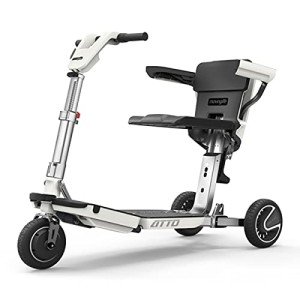Understanding Mobility Aids: Enhancing Independence and Quality of Life
As society continues to age and individuals progressively seek methods to maintain self-reliance, the need for mobility aids has actually never ever been more relevant. Mobility aids, which encompass a range of devices created to help people with strolling or moving around, play a vital function in promoting mobility, boosting safety, and improving overall quality of life. This blog post will check out the different types of mobility aids, their benefits, factors to consider for choice, and respond to some frequently asked questions.
Types of Mobility Aids
Numerous mobility aids are readily available, each created to attend to particular requirements. The following table sums up some of the most typical kinds of mobility aids and their features.
| Kind Of Mobility Aid | Description | Best Suited For | Key Features |
|---|---|---|---|
| Canes | A handheld stick offering support and balance. | People who need minimal support. | Light-weight, portable, adjustable height. |
| Walkers | Four-legged frames supplying stability. | Those requiring significant support while strolling. | Foldable, some with wheels, included safety features. |
| Rollators | Wheeled walkers with a seat for resting. | Individuals needing mobility with the alternative to rest. | Brakes, baskets for personal products, adjustable height. |
| Wheelchairs | Chairs with wheels for people with restricted mobility. | Those unable to walk or needing substantial support. | Handbook or powered options, personalized seating. |
| Scooters | Motorized devices for larger distances. | People with restricted stamina but needing self-reliance. | Different sizes and styles, typically portable. |
| Crutches | Support devices put under the arms or forearms. | Individuals recuperating from lower limb injuries. | Adjustable, lightweight, requires upper body strength. |
| Stairlifts | Mechanical devices for moving in between floorings. | Users dealing with obstacles in multi-level homes. | Personalized for different staircases, automated. |
Advantages of Mobility Aids
Mobility aids provide a selection of benefits that can substantially enhance the lives of people facing mobility challenges. Some notable advantages consist of:
- Increased Independence: Mobility aids empower individuals to move freely without relying on others for assistance, therefore enhancing their self-confidence and self-esteem.
- Enhanced Safety: Using mobility aids can decrease the danger of falls and injuries, particularly for older adults or those with balance problems.
- Improved Quality of Life: By assisting in mobility, individuals can take part in social activities, participate in events, and delight in life more totally, contributing to much better psychological and mental health.
- Rehab Support: After surgery or injury, mobility aids provide necessary support and stability, aiding in recovery and rehab procedures.
- Availability: Many mobility aids are created to be utilized both indoors and outdoors, guaranteeing that people can browse different environments with ease.
Factors to Consider When Choosing Mobility Aids
Selecting the proper mobility aid requires cautious factor to consider of several factors, consisting of:
| Factor | Considerations |
|---|---|
| User's Needs | Evaluate the level of mobility needed; consider whether the user requires momentary or long-term support. |
| Physical Limitations | Assess the user's strength, balance, and coordination to determine the best kind of help. |
| Setting | Think about the primary environments where the aid will be used, such as home, outdoors, or specific terrains. |
| Weight and Portability | Ensure that the picked gadget is manageable regarding mobility and storage, especially for outside usage. |
| Budget plan | Mobility aids come in a range of rates; consider insurance coverage and readily available funding choices. |
| Adjustability | Pick aids that can be adjusted for height and comfort to accommodate development or altering needs. |
Frequently Asked Questions About Mobility Aids
1. How do I know if I require a mobility aid?
Many factors can signal the requirement for a mobility help, such as trouble strolling or stabilizing, tiredness while standing, or a current surgical treatment affecting mobility. Consulting with a health care specialist can provide guidance tailored to private requirements.
2. What types of mobility aids are covered by insurance coverage?
Coverage varies between insurance companies, but a lot of supply options for durable medical equipment, which usually includes wheelchairs, walkers, and some types of walking sticks. Consult lowest price for particular coverage details.
3. Can mobility aids be used outdoors?
Yes, many contemporary mobility aids are developed for outdoor use. Rollators, scooters, and some walkers are equipped with features for stability and ease of use on different surface.
4. How do I maintain my mobility help?
Regular maintenance includes looking for any wear and tear, ensuring that parts such as wheels, brakes, and frames are operating correctly, and cleaning up the equipment as required. Following the maker's standards is essential for security.
5. Is there a risk of ending up being reliant on mobility aids?
While some users may become reliant on mobility aids, they are designed to promote independence and mobility. Slowly using a mobility aid can improve self-confidence and assistance keep physical strength and coordination.
Mobility aids are important tools that empower individuals to overcome physical challenges, promoting self-reliance and boosting lifestyle. By understanding the various types of mobility aids available, their advantages, and essential factors for consideration, households and caretakers can make educated decisions that best fulfill the requirements of their enjoyed ones. With the right support, those with mobility difficulties can lead fulfilling and active lives, totally free to explore the world around them.

